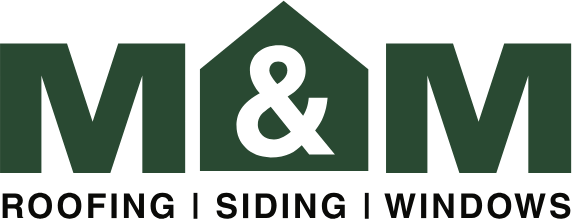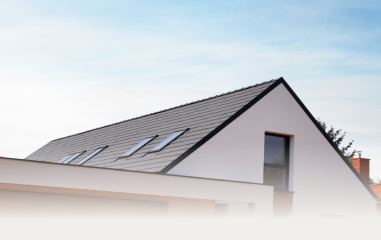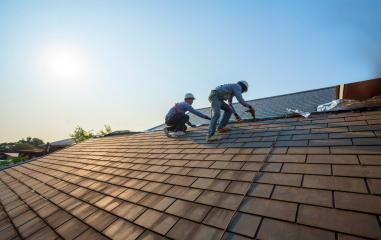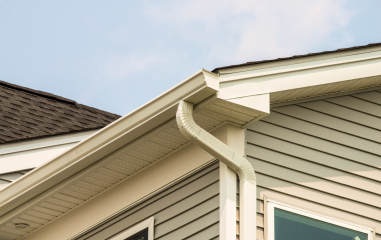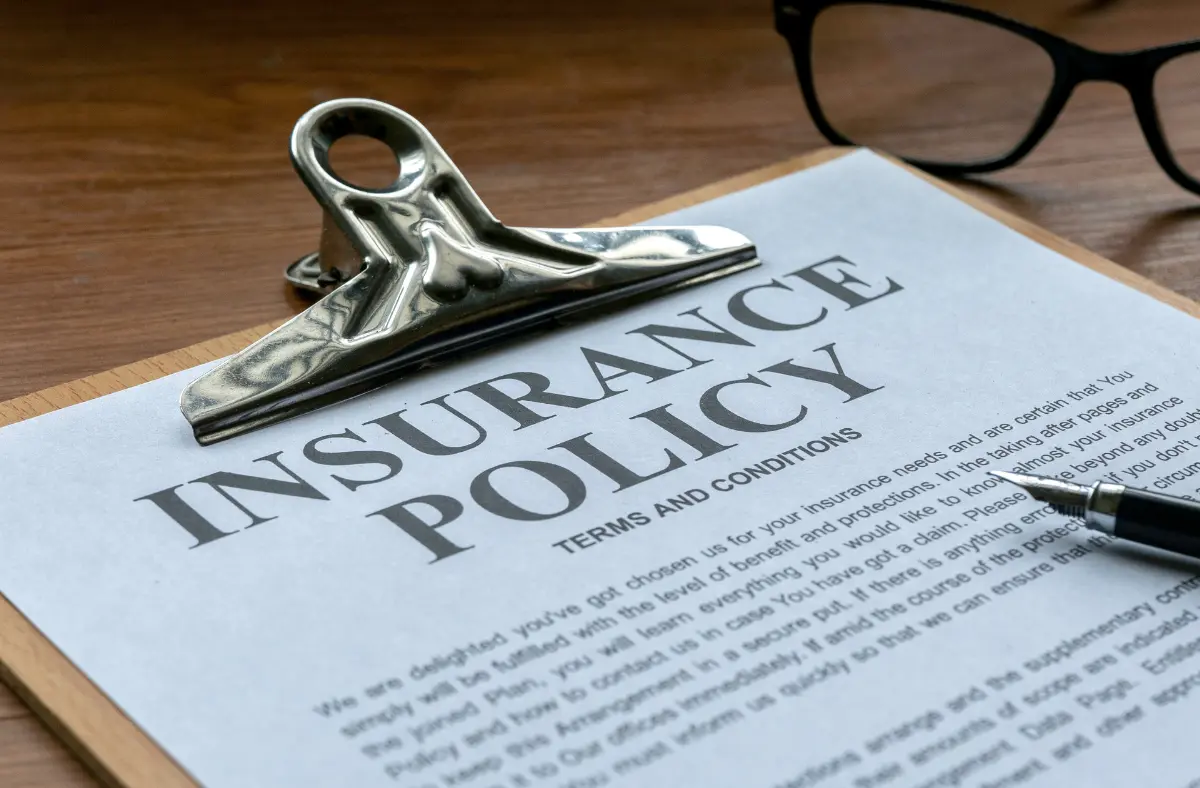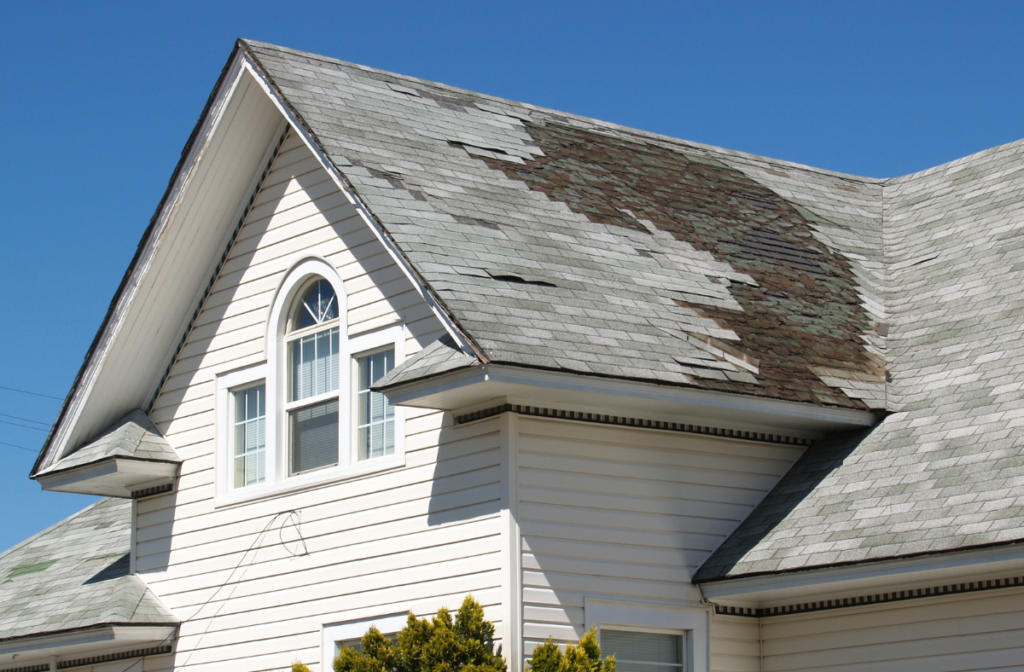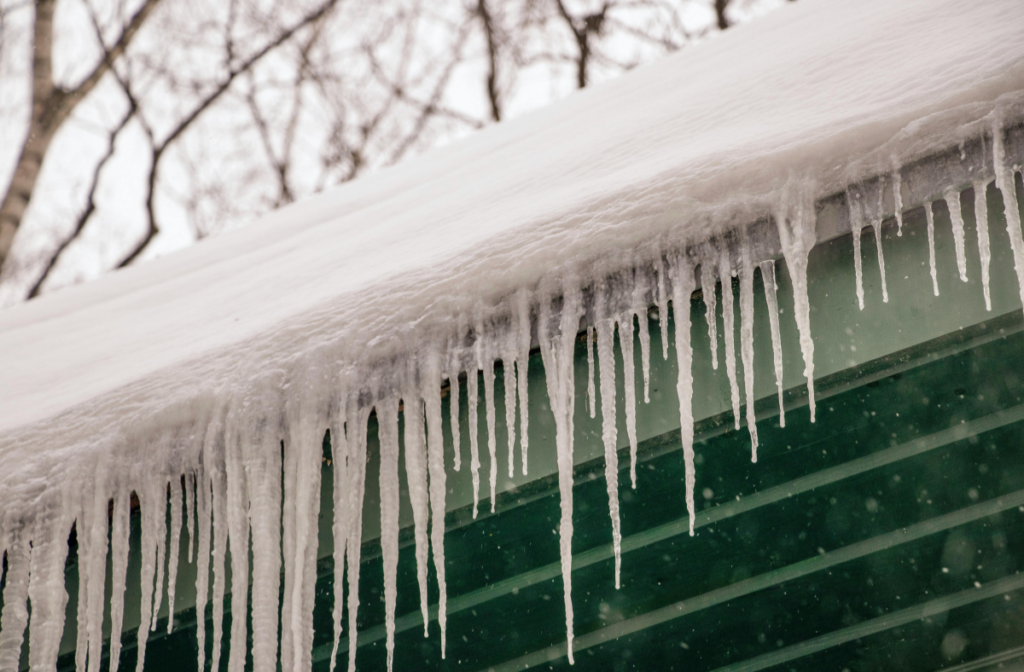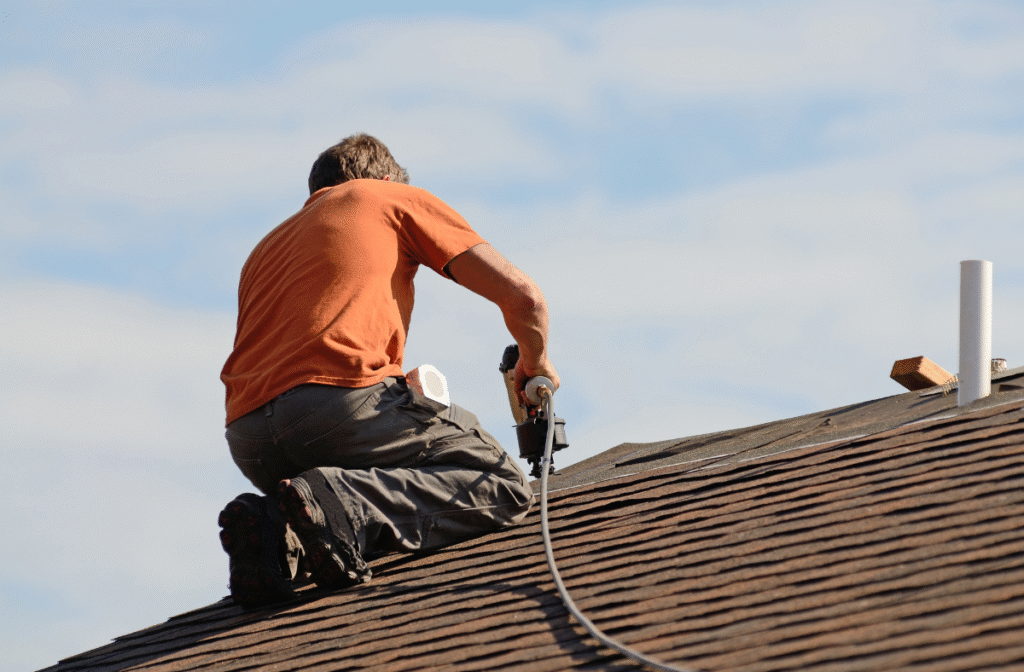Table of Contents
Did you know that roof damage accounts for nearly 30% of all homeowners insurance claims in the United States?
Severe weather events like hailstorms, high winds, and heavy snowfall are often to blame, leaving countless homeowners grappling with costly repairs. Understanding how to effectively file a claim and maximize your payment is crucial to protecting your home and your wallet.
In this guide, we’ll walk you through everything you need to know about a roof damage insurance claim.
Understanding Roof Damage and Insurance Coverage
First, let’s talk about different types of roof damage and insurance coverage.

Common Causes of Roof Damage
The most common causes of roof damage include:
- Hailstorms
- Strong winds
- Heavy snow and ice buildup
- Falling debris or trees
- Prolonged exposure to UV rays and sun damage
- Poor or aging roof construction materials
- Improper installation of roofing systems
- Animals or pests causing structural issues
- Heavy rain leading to leaks or water accumulation
It’s important to note that not all homeowners insurance policies cover every type of roof damage. For example, some policies may exclude coverage for wind or hail damage, while others may only cover certain types of roofs (e.g. asphalt shingles).
Replacement Cost Coverage vs. Actual Cash Value Coverage
When filing a roof damage insurance claim, understanding the difference between replacement cost coverage (RCC) and actual cash value (ACV) coverage is essential. These two types of coverage impact how much you’ll receive for your claim, which can significantly affect your out-of-pocket expenses.
Replacement Cost Coverage (RCC) reimburses you for the cost of repairing or replacing your roof at current market prices, without factoring in depreciation. This type of coverage ensures you’re able to restore your roof to its original condition using materials of similar quality, regardless of the age of your roof.
Actual Cash Value (ACV) Coverage, on the other hand, factors in depreciation when determining the reimbursement amount. This means your insurance provider will calculate the current value of your roof, taking into account its age and condition, and pay you based on that amount. While ACV coverage typically has lower premium costs, it offers less financial protection, leaving you responsible for covering the depreciation gap.
Choosing the right coverage depends on your budget and risk tolerance. While RCC provides greater peace of mind and financial security, ACV may be a more cost-effective option if you’re willing to assume some of the repair expense.
It’s crucial to carefully review your homeowner’s insurance policy to understand which type of coverage you have and its implications for your roof damage claims.
When to File a Roof Damage Insurance Claim
When deciding whether to file a roof damage insurance claim, it’s important to differentiate between minor damage and significant damage. Minor damage, such as a few missing shingles, small leaks, or slight wear and tear, may not warrant an insurance claim depending on your deductible and the cost of repairs.
In some cases, minor issues can be addressed through quick fixes or routine maintenance without involving your insurance provider, which could prevent potential increases in your premium.
Significant damage, however, such as extensive storm damage, major leaks, or structural issues, typically requires filing a claim. Significant damage often leads to costly repairs or a full roof replacement, making insurance coverage essential to alleviate the financial burden.
Dealing with a storm-damaged roof and have questions about insurance? Call us for a free roof inspection today.
Preparing to File a Roof Damage Insurance Claim
If you decide to file a roof damage insurance claim, there are a few steps you should follow, especially if you want insurance to pay for a roof replacement.
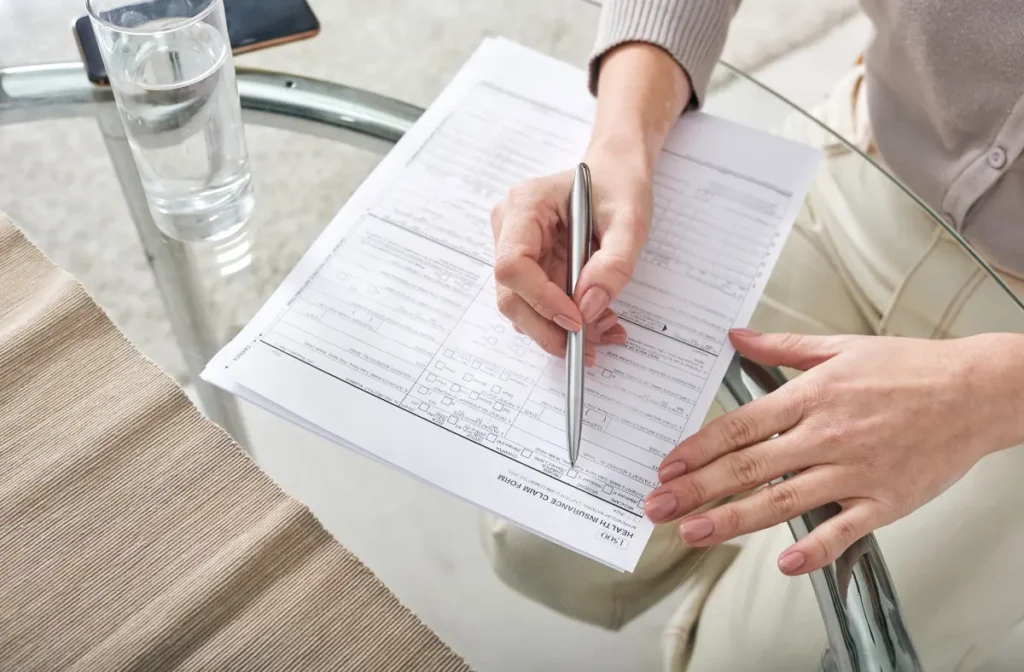
Documenting the Damage
To support your claim, it’s essential to document the damage thoroughly. This includes taking photos or videos of the damaged areas from different angles and distances. Be sure to capture all affected parts of the roof, including any interior damage caused by leaks.
Hiring A Roofing Contractor
Next, it’s important to hire a reputable roofing contractor to assess the damage and provide an estimate for repairs or replacement. This estimate will be crucial for your insurance claim.
Your chosen contractor can also help you navigate the insurance claim process, as they are experienced in working with insurance providers and may be able to provide additional evidence or documentation of the damage.
Be wary of “storm chaser” roofing companies who may try to take advantage of your situation. Always do research and choose a reputable, licensed contractor with good customer reviews.
At M&M Roofing, we provide free storm damage roof inspections. We have more than 40 years of experience in the roofing industry and have helped countless homeowners navigate the insurance claim process successfully.
Reviewing Your Insurance Policy
Before submitting your claim, make sure to review your insurance policy carefully. This will help you understand your coverage limits, deductibles, and any specific requirements for filing a roof damage claim.
You should also check whether your policy covers temporary repairs if necessary, as some insurance providers may require you to take immediate action to prevent further damage.
If you have any questions or concerns about your policy, don’t hesitate to reach out to your insurance provider for clarification. It’s better to be informed and prepared before filing your claim.
Submitting Your Claim
With documented evidence of the damage and a thorough understanding of your insurance policy, you’re now ready to submit your claim. This can typically be done online or over the phone with your insurance provider.
Be sure to include all necessary documentation, such as photos, videos, and estimates from your roofing contractor. You may also need to provide proof of ownership and other personal information.
It’s important to note that the claims process may take some time, so patience is key. Keep in touch with your insurance provider and follow up as needed.
Dealing with Adjusters
After submitting your claim, an insurance adjuster will be sent to assess the damage to your roof. It’s important to accompany the adjuster during their inspection and provide any additional evidence or information that may be necessary.
In some cases, there may be discrepancies between the adjuster’s assessment and your roofing contractor’s estimate. If this happens, don’t hesitate to advocate for yourself and provide evidence to support your claim.
Receiving Your Settlement
Once the damage has been assessed and verified by your insurance provider, you will receive a settlement offer. This can cover the cost of repairs or a complete replacement of your roof, depending on the extent of damage and your policy coverage.
Be sure to carefully review the settlement offer and ask for clarification if needed. If you feel that the offer is not adequate, you can negotiate with your insurance provider or seek legal assistance.
Call us today for your free roof inspection.
Common Mistakes To Avoid With Your Roof Damage Claim

There are a few common mistakes to watch out for when filing your roof insurance damage claim.
Failing To Meet Deadlines
Be aware of any deadlines set by your insurance provider for filing a claim or submitting additional information. If you miss these deadlines, it could result in a denial of your claim.
Not Providing Enough Documentation
As mentioned before, it’s important to provide all necessary documentation when filing your claim. This includes photos, videos, estimates from contractors, and any other evidence that supports the extent of damage to your roof.
Accepting the First Offer Without Reviewing
While it may be tempting to accept the first settlement offer from your insurance provider, it’s important to carefully review and consider if it adequately covers the cost of repairs or replacement.
Not Understanding Your Policy Coverage
It’s crucial to fully understand your insurance policy coverage before filing a claim for roof damage. This can help you determine what is covered and what may not be covered by your insurance provider.
Conclusion

Filing an insurance claim for roof damage can seem like a daunting process, but with proper preparation and understanding of your policy coverage, it can be a smooth experience. Be sure to document all damage and provide the necessary documentation to support your claim. And if you encounter any challenges, don’t hesitate to seek help from professionals.
If you need help filing a roof damage insurance claim, we can help you out. We have more than 40 years of experience dealing with storm-damaged roofs and know the ins and outs of the insurance claim process.
Our team can assist you in documenting damage, negotiating with your insurance provider, and ensuring that you receive a fair settlement for repairs or replacement.
Call us today so we can help you with your insurance claim and get your roof fixed or replaced.
